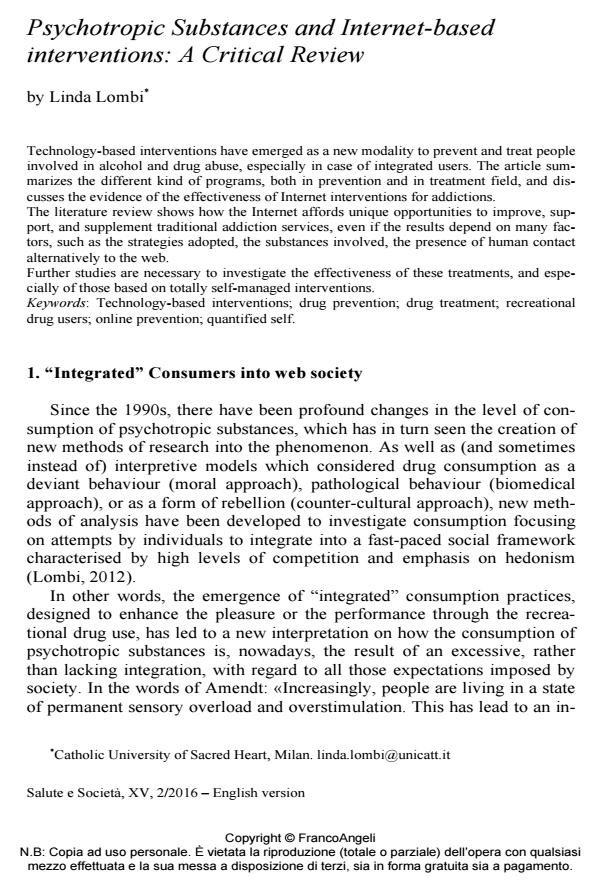Psychotropic Substances and Internet-based interventions: A Critical Review
Journal title SALUTE E SOCIETÀ
Author/s Linda Lombi
Publishing Year 2016 Issue 2016/suppl. 2
Language English Pages 16 P. 68-83 File size 104 KB
DOI 10.3280/SES2016-SU2006
DOI is like a bar code for intellectual property: to have more infomation
click here
Below, you can see the article first page
If you want to buy this article in PDF format, you can do it, following the instructions to buy download credits

FrancoAngeli is member of Publishers International Linking Association, Inc (PILA), a not-for-profit association which run the CrossRef service enabling links to and from online scholarly content.
Technology-based interventions have emerged as a new modality to prevent and treat people involved in alcohol and drug abuse, especially in case of integrated users. The article summarizes the different kind of programs, both in prevention and in treatment field, and discusses the evidence of the effectiveness of Internet interventions for addictions. The literature review shows how the Internet affords unique opportunities to improve, support, and supplement traditional addiction services, even if the results depend on many factors, such as the strategies adopted, the substances involved, the presence of human contact alternatively to the web. Further studies are necessary to investigate the effectiveness of these treatments, and especially of those based on totally self-managed interventions.
Keywords: Technology-based interventions; drug prevention; drug treatment; recreational drug users; online prevention; quantified self.
Linda Lombi, Psychotropic Substances and Internet-based interventions: A Critical Review in "SALUTE E SOCIETÀ" suppl. 2/2016, pp 68-83, DOI: 10.3280/SES2016-SU2006